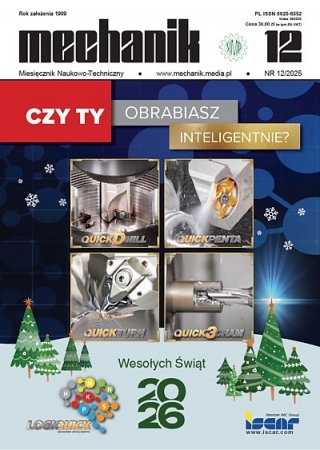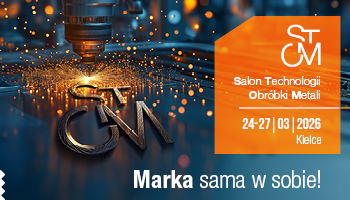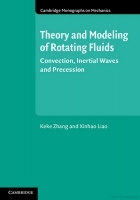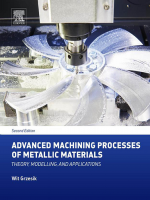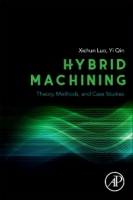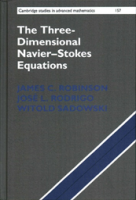New diamond composite tools and their impact on AISI 4140 alloy steel surface after slide burnishing *
Nowe diamentowe narzędzia kompozytowe i ich wpływ na powierzchnię stali stopowej AISI 4140 po nagniataniu ślizgowym
Author: Magdalena Szutkowska, Daniel Toboła, Lucyna Jaworska, Marcin Rozmus
Mechanik nr 10/2019 - Biuletyn Instytutu Zaawansowanych Technologii Wytwarzania
ABSTRACT: Working parts of slide burnishing tools were made from two new diamond composites with ceramic bonding: MAX Ti3GeC2 and TiB2nano phases, respectively. Microstructure and micro composition were analyzed by scanning and transmission electron microscopy and X-ray diffraction. Vickers hardness HV1 values were 36 and 46 GPa, Young’s moduli 490 and 560 GPa, tensile strengths 400 and 560 MPa, fracture toughness 8.4 and 11.0 MPa·m1/2 and friction coefficient values 0.63 and 0.56, respectively for the composites with MAX Ti3GeC2 and TiB2nano phases. The tools were tested by slide burnishing on previously turned AISI 4140 alloy steel bar. Improvement in the surface geometric structure was demonstrated for both materials, more so in the case of TiB2nano phase, as compared to burnishing bycomposites with MAX Ti3GeC2 phase.
KEYWORDS: diamond composite, TiB2nano phase, MAX phase, HP-HT sintering, slide burnishing, surface roughness
STRESZCZENIE: Części robocze narzędzi do nagniatania ślizgowego zostały wykonane z dwóch nowych kompozytów diamentowych ze spoiwem ceramicznym, odpowiednio z fazą MAX Ti3GeC2 i TiB2nano. Mikrostrukturę i skład chemiczny w mikroobszarach analizowano za pomocą skaningowej i transmisyjnej mikroskopii elektronowej oraz dyfrakcji rentgenowskiej. Parametry kompozytów z fazami MAX Ti3GeC2 i TiB2nano wynosiły odpowiednio: twardość Vickersa HV1 – 36 i 46 GPa, moduł Younga – 490 i 560 GPa, wytrzymałość na ściskanie promieniowe – 400 i 560 MPa, odporność na pękanie – 8,4 i 11,0 MPa·m1/2, współczynnik tarcia – 0,63 i 0,56. Narzędzia testowano poprzez nagniatanie ślizgowe na uprzednio toczonym pręcie ze stali stopowej AISI 4140. Wykazano poprawę struktury geometrycznej powierzchni dla obu materiałów – większą dla końcówki z fazą TiB2nano w porównaniu do nagniatania końcówką z fazą MAX Ti3GeC2.
SŁOWA KLUCZOWE: kompozyt diamentowy, faza TiB2nano, faza MAX, spiekanie HP-HT, nagniatanie ślizgowe, chropowatość powierzchni
BIBLIOGRAFIA / BIBLIOGRAPHY:
[1] Żak K., Grzesik W., Prażmowski M. “Investigation of sequential cryogenic hard turning and ball burnishing processes”. Metalurgija. 53 (2014): 521–525.
[2] Brostow W., Czechowski K., Polowski W., Rusek P., Wronska I. “Slide diamond burnishing of tool steels with adhesive coatings and diffusion layers”. Material Research Innovations. 17 (2013): 269–277.
[3] Okada M., Shinya M., Matsubara H., Kozuka H., Tachiya H., Asakawa N., Otsu M. “Development and characterization of diamond tip burnishing with a rotary tool”. Journal of Materials Processing Technology. 244 (2017): 106–115.
[4] Toboła D., Brostow W., Czechowski K., Rusek P., Wronska I. “Structure and properties of burnished and nitrided AISI D2 tool steel”. Material Science (Medziagotyra). 21 (2015): 511–516.
[5] Toboła D., Brostow W., Czechowski K., Rusek P. “Improvement of wear resistance of some cold working tool steels”. Wear. 382–383 (2017): 29–39.
[6] Toboła D., Kania B. “Phase composition and stress state in the surface layers of burnished and gas nitrided Sverker 21 and Vanadis 6 tool steels”. Surface and Coatings Technology. 353 (2018): 105–115.
[7] Korzynski M., Zarski T. “Slide diamond burnishing influence on of surface stereometric structure of an AZ91 alloy”. Surface and Coatings Technology. 307 (2016): 590–595.
[8] Xiang H., Feng Z., Li Z., Zhou Y. “Temperature-dependence of structural and mechanical properties of TiB2: A first principle investigation”. Journal of Applied Physics. 117 (2015): 225902-1–225902-8.
[9] Magnuson M., Palmquist J.-P., Mattesini M., Li S., Ahuja R., Eriksson O., Emmerlich J., Wilhelmsson O., Eklund P., Högberg H., Hultman L., Jansson U. “Electronic structure investigation of Ti3AlC2, Ti3SiC2, and Ti3GeC2 by soft X-ray emission spectroscopy”. Physics Letters. B 72 (2005): 1–15.
[10] Low I.-M., Zhou Y. “MAX Phases: Microstructure, Properties and Applications”. New York: Nova Science Publishers Inc., 2012, 1–282.
[11] Riedel R., Chen I.-W. “Ceramics Science and Technology. Materials and Properties”. WILEY-VCH Verlag GmbH& Co. KGaA, 2010, 1–862.
[12] Low I.M. “Advances in Science and Technology of Mn+1AXn Phases”. Cambridge: Woodhead Publishing Limited, 2012, 1–474.
[13] Eklund P., Beckers M., Jansson U., Högberg H., Hultman L. “The Mn+1AXn phases: Materials science and thin-film processing”. Thin Solid Films. 518 (2010): 1851–1878.
[14] Barsoum M.W., El-Raghy T. “The MAX phases: Unique new carbide and nitride materials”. American Scientists. 89 (2001): 334–343.
[15] Ko Y.S., Tsurumi T., Fukunada O., Yano T. “High pressure sintering of diamond-SiC composite”. Journal of Materials Science. 36 (2001): 469–475.
[16] Will G. “Electron deformation density in titanium diboride chemical bonding in TiB2”. Journal of Solid State Chemistry. 117 (2004): 628–631.
[17] Polish Standard PN-EN 1389:2005. Advanced technical ceramics. Ceramic composites. Physical properties. Determination of density and open porosity. (2005).
[18] Polish Standard PN-EN 843-4:2007, Advanced technical ceramics. Mechanical properties of monolithic ceramics at room temperature. Part 4. Surface hardness according to: Vickers, Knoop and Rockwell. (2007).
[19] Szutkowska M., Jaworska L., Boniecki M., Stobierski L., Rozmus M. “Mechanical behavior of diamond matrix composites with ceramic Ti3(Si,Ge)C2 bonding phase”. International Journal of Refractory Metals and Hard Materials. 49 (2015): 302–306.
[20] Jaworska L., Szutkowska M., Morgiel J., Stobierski L., Lis J. “Ti3SiC2 as a bonding phase in diamond composite”. Journal of Materials Science Letters. 20 (2001): 1783–1786.
DOI: https://doi.org/10.17814/mechanik.2019.10.78
* Artykuł recenzowany




